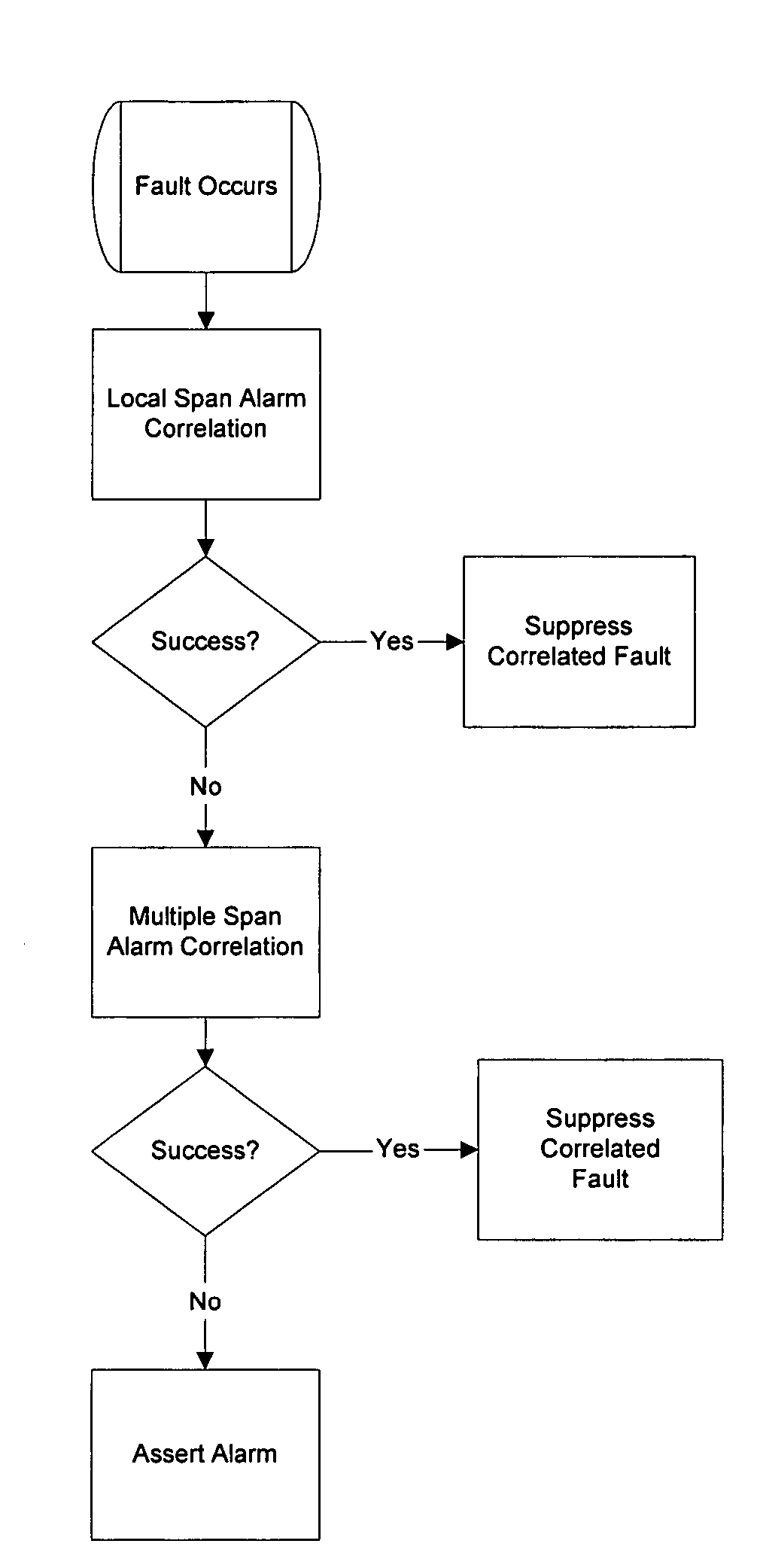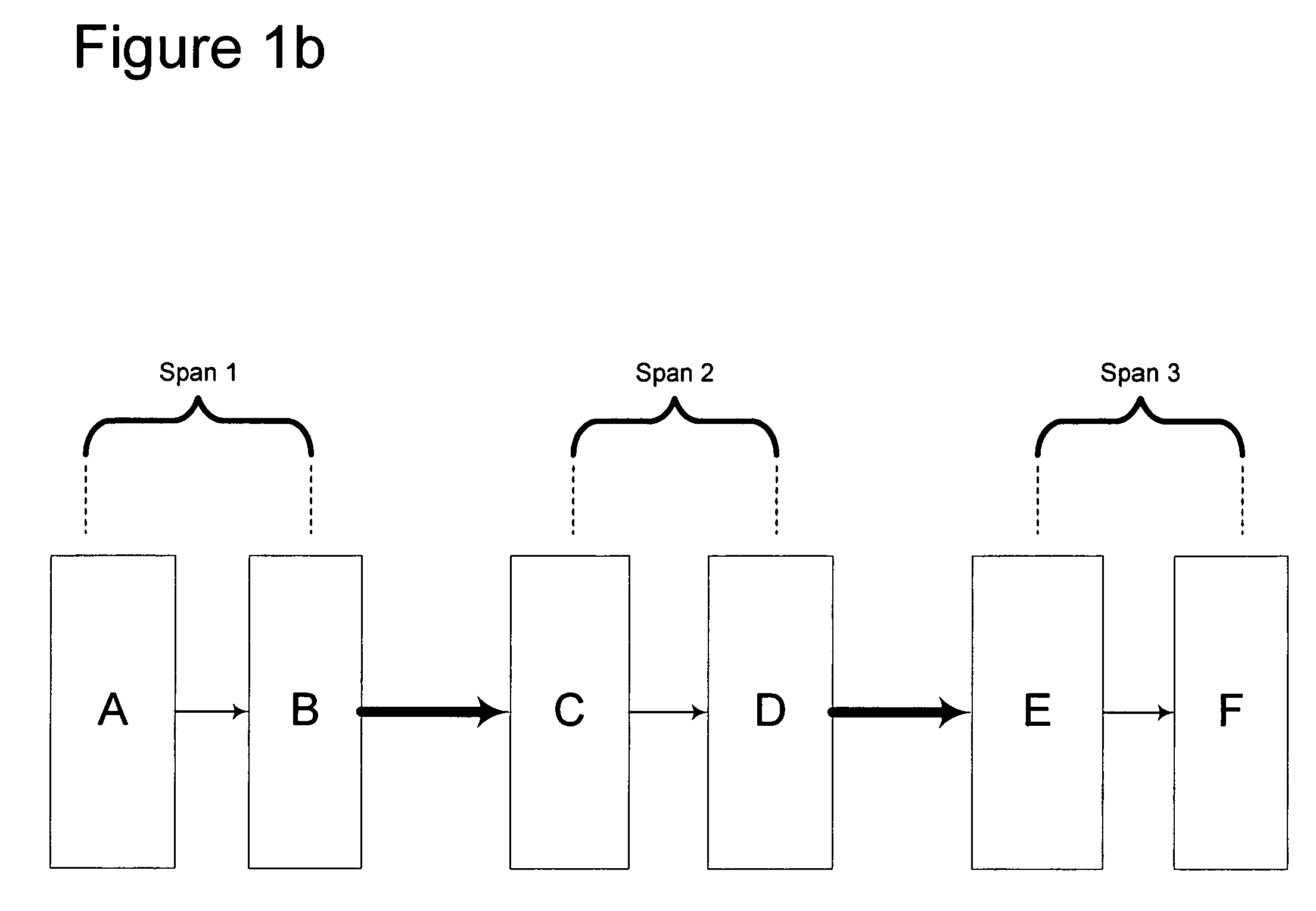Method and apparatus for aggregating alarms and faults of a communications network
a communication network and alarm technology, applied in the field of distributed optical network management systems and methods, can solve the problems of inconvenient expansion, limited capacity of existing waveguide media, and inability to meet the needs of users, and achieve the effect of powerful and effective solutions
- Summary
- Abstract
- Description
- Claims
- Application Information
AI Technical Summary
Benefits of technology
Problems solved by technology
Method used
Image
Examples
Embodiment Construction
[0054]As mentioned above, the present invention includes systems and methods for correlating alarms and appropriately suppressing the reporting of faults that may occur on a single span or multiple spans of a communications network. Such communication networks conventionally include a plurality of network elements. By providing some of these network elements with a network element processor designed and / or programmed according to the invention, the distributed network management functionality advantages of the invention can be enabled.
[0055]The network element processors (NEPs) periodically transmit identification and status information to the other NEPs in the network. The NEPs may also inform other NEPs of topology information. In this way, each NEP can build a database 100 so that, collectively, the network will include distributed processing as well as a distributed database.
[0056]If a service channel separate from the main communication channel(s) is provided such information m...
PUM
 Login to View More
Login to View More Abstract
Description
Claims
Application Information
 Login to View More
Login to View More - R&D
- Intellectual Property
- Life Sciences
- Materials
- Tech Scout
- Unparalleled Data Quality
- Higher Quality Content
- 60% Fewer Hallucinations
Browse by: Latest US Patents, China's latest patents, Technical Efficacy Thesaurus, Application Domain, Technology Topic, Popular Technical Reports.
© 2025 PatSnap. All rights reserved.Legal|Privacy policy|Modern Slavery Act Transparency Statement|Sitemap|About US| Contact US: help@patsnap.com



